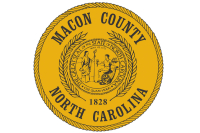Smokies parking tag program takes effect
Starting March 1, any vehicle parked in the Great Smoky Mountains National Park for more than 10 minutes must display a valid parking tag as the “Park it Forward” program takes effect.
Park visitors can buy a $40 annual tag, a $15 weekly tag or a $5 daily tag, with various methods available to purchase each.
-
Annual tags are available online at smokiesinformation.org or at any of the park’s visitor centers.
-
Daily and weekly tags are available online at recreation.gov and at Oconaluftee Visitor Center, Swain County Visitor Center, Gatlinburg Welcome Center, Sugarlands Visitor Center, Townsend Visitor Center, Cades Cove Visitor Center, Cades Cove Orientation Shelter and Great Smoky Mountains Institute at Tremont, as well as Clingmans Dome Visitor Center once it opens for the season. The park will also install automated fee machines at various locations, which have yet to be announced.
Some parties are exempt from the parking tag requirement:
-
Members of the Eastern Band of Cherokee Indians can access free annual parking tags at the Principal Chief’s Office at 88 Council House Loop in Cherokee.
Related Items
-
Vehicles with valid, state-issued disabled placards or license plates are exempt from the parking tag requirement.
-
No parking tag is required for people visiting the park through a special use permit for burials, cemetery visits including Decoration Days and First Amendment activities.
Each tag is valid only for the vehicle matching the license plate number on the tag. The physical parking tag must be displayed in the vehicle — digital representations are not accepted. Motorcyclists using a daily or weekly tag — which is paper unlike the cling adhesive used for the annual tag — should come prepared to display the tag without it blowing away.
The park expects the program to bring in $5 million for the current fiscal year ending Sept. 30 and $8-10 million on average thereafter. When including other fee increases approved along with Park it Forward — backcountry camping rates doubled, and campground fees rose across the board — total revenue is estimated at $12-14 million each year. All funds will stay in the park, and the money will help bridge a 40% gap between the park’s buying power and spending needs. Restoring staffing levels is a top priority for the revenues.
For more information, including Frequently Asked Questions, visit nps.gov/grsm/planyourvisit/fees.htm.









